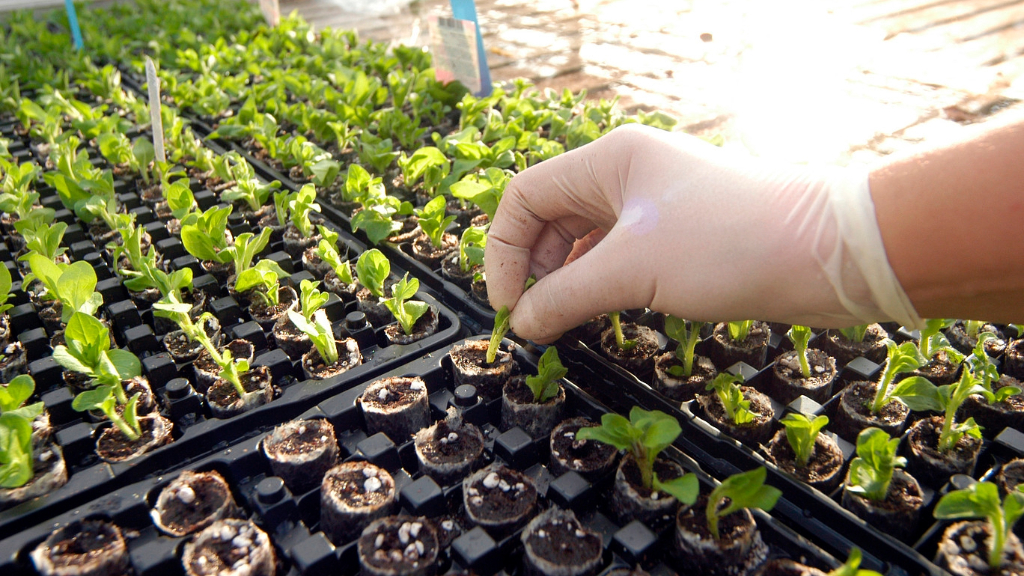Top 10 Questions About Plant Propagation


Here at Gardening Know How we get lots of questions, and our goal is to provide answers to those inquiries to the best of our knowledge, especially when it comes to plant propagation. The following information includes the 10 most commonly asked questions about we receive about propagating plants. We'll answer when, how and what regarding all your propagation needs. Whether you have seed or cuttings, many of your queries will be answered.
1. How to save seeds from plants?
Depending upon the type of plant, saving seed is often as easy as allowing the seed head to ripen and dry and then removing seeds from chaff and placing them in a container. Other seeds, such as those from fruit, need to be soaked and have the flesh pared away prior to storage. As a rule, most seeds need to be stored in a cool, dry, dark location.
2. How do you take cuttings from plants?
Timing for cuttings varies by species but most should be taken from young, still growing material as with softwood or semi-hardwood cuttings. Always sterilize your cutting implement and cut just above a growth node to prevent unsightly dead twigs on your plant.
3. How and when to start seeds indoors?
Seeds that will be planted outdoors need to be started at least 6 to 8 weeks prior to the date of the last frost. A good purchased seed starting mixture is useful, as well as small container or flats. You can also make your own planting blend. For veggies and most perennials, a mix of 1/3 each garden soil, peat and compost will work perfectly. For cacti, succulents and xeriscape plants, mix half soil with half gritty material such as horticultural sand.
Sign up for the Gardening Know How newsletter today and receive a free copy of our e-book "How to Grow Delicious Tomatoes".
Rooting hormone is a plant auxin or growth hormone. They may come purchased in a powder or liquid form. These products help cuttings root faster and easier. Homemade rooting hormones can be made from willow tea, honey and cinnamon.
Soilless mixes are good media to reduce the chance of fungal growth. They do not contain soil and, therefore, reduce the chances of disease, insects and bacteria transferring to your little plants. Examples are sphagnum moss, perlite, vermiculite and horticultural sand. Often, the items are blended for specific types of plants. You can also make your own soilless mix.
6. How do you graft a tree and what types can be grown together?
Grafting is the best way to preserve a plant's characteristics. The process unites a scion (top part of plant) with a rootstock (rooted base). There are five common ways to graft, but the easiest is to take a cutting of your desired plant and then select an appropriate rootstock. Bind the cut ends of both together with plant tape. Over time, the two pieces will grow together.
7. Can I root plants in water and which ones?
Many of our favorite houseplants, herbs and even garden ornamentals can be rooted in water. A switch of willow is a classic example of an ornamental tree which will produce roots quickly in water. Other examples of plants that root easily are spider plants, pothos, hibiscus, sage, mint, and ivy. Soft stemmed plants with bumps on the stems work best, like tomatoes. It doesn't cost a thing to just try a cutting and the results may be amazing.
8. Why are my seedlings leggy?
If your seedlings are becoming leggy, a lack of light is the most likely cause. Plants stretch out to receive maximum light. Try pinching the plant back and situating it in a higher sunlight situation.
9. When should you divide bulbs and perennials?
Dividing plants is an easy process that can result in more of your favorite plants. Wait until the plant has died back. Let foliage turn yellow on bulbs and then dig up the cluster and separate, planting each bulb individually. For perennials, wait until early spring and dig them up. Cut the root mass into 2 or 3 pieces and bury individually. Use good sharp, clean implements to avoid transferring disease or damaging the pieces.
10. How to propagate succulent cuttings?
Succulents are one of the easiest forms of plant to propagate. Many can be started from a leaf or piece of stem simply laid upon a nice, lightly moist, soilless medium or cactus mix. Many succulents form pups that you can divide from the parent plant and individually pot up. Keep starts a bit on the dry side as they root.
We all have questions now and then, whether long-time gardeners or those just starting out. So if you have a gardening question, get a gardening answer. We're always here to help.
